Is your kombucha not as fizzy as you would like? We’re walking through all the reasons your kombucha isn’t carbonated (and how to fix it)!
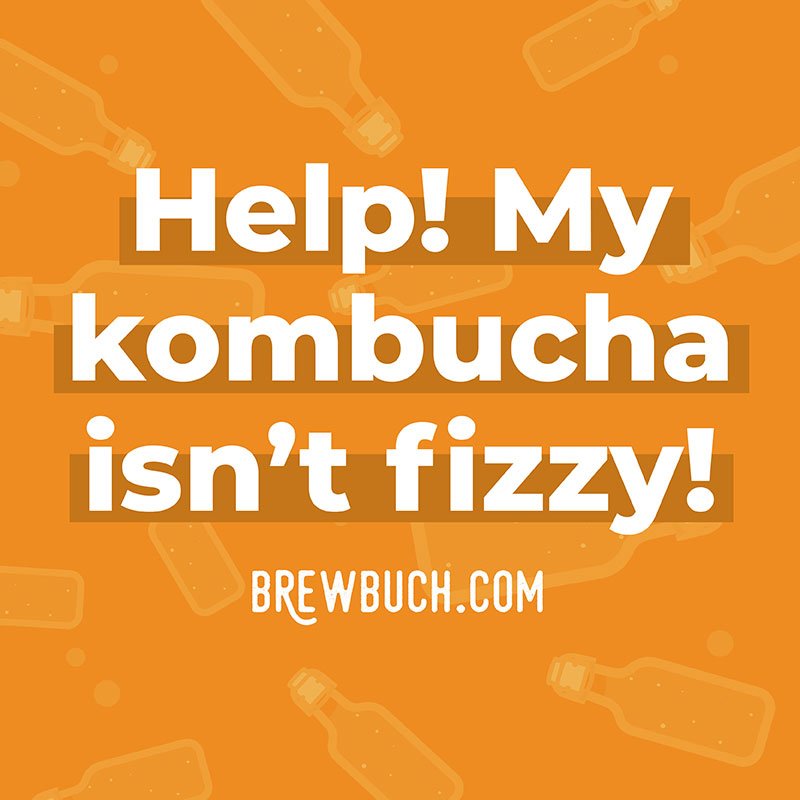
There’s nothing quite like the proud feeling of achievement when you crack open a bottle of fizzy homemade kombucha, all carbonated and bubbly and delicious. The flip side, of course, is when your kombucha isn’t fizzy and you start to wonder where you went wrong (in kombucha? in life?).
So for all the folks with a sad bottle of flat kombucha on your hands (we’ve all been there), this is your troubleshooting guide to help you achieve carbonated kombucha success!
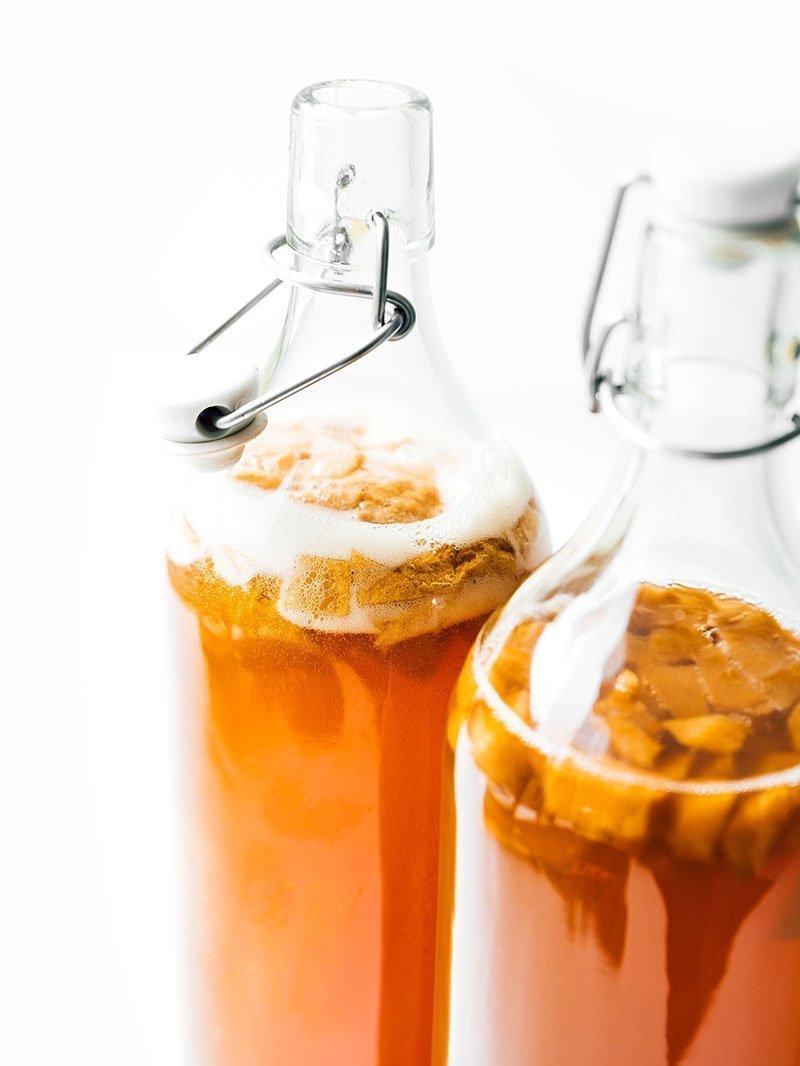
What is carbonation?
Carbonation, put simply, is carbon dioxide (CO2) dissolved in a liquid. In kombucha, the yeasts in your brew eat the sugar and use it to produce alcohol and CO2.
In the first fermentation, the kombucha is covered only with a cloth, meaning the CO2 can escape and doesn’t stay in the liquid. That’s why we do a second fermentation, sealing the kombucha in airtight bottles and trapping the CO2 in the kombucha.
This method of carbonation is called natural carbonation. Another method is called forced carbonation, and this is when machines are used to artificially add carbonation to a drink. Drinks with forced carbonation include carbonated water, soda, and even most store bought kombucha.
While natural carbonation produces a soft feeling, with smaller bubbles and less tingle, forced carbonation is just the opposite. Forced carbonated drinks are usually sharp feeling, with large, uniform bubbles. This is an important distinction, in that you should not expect your home brewed kombucha to have the carbonated feeling of a soft drink.
With that said, you can make some seriously carbonated and fizzy kombucha. Here’s how!
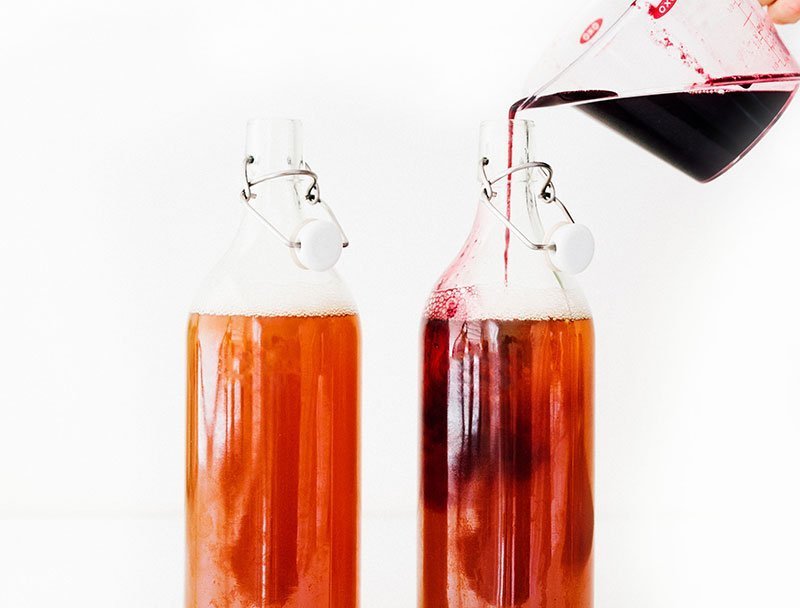
How to carbonate kombucha
To carbonate kombucha, you’ll essentially just transfer your uncarbonated kombucha into airtight bottles, add something sweet as “food”, seal shut, then wait for the bacteria and yeasts to work their magic!
While some carbonation does occur in the first fermentation (the SCOBY can create a light seal, trapping a little fizz in the brew), most of it occurs in the second fermentation Read more about how to brew kombucha here.
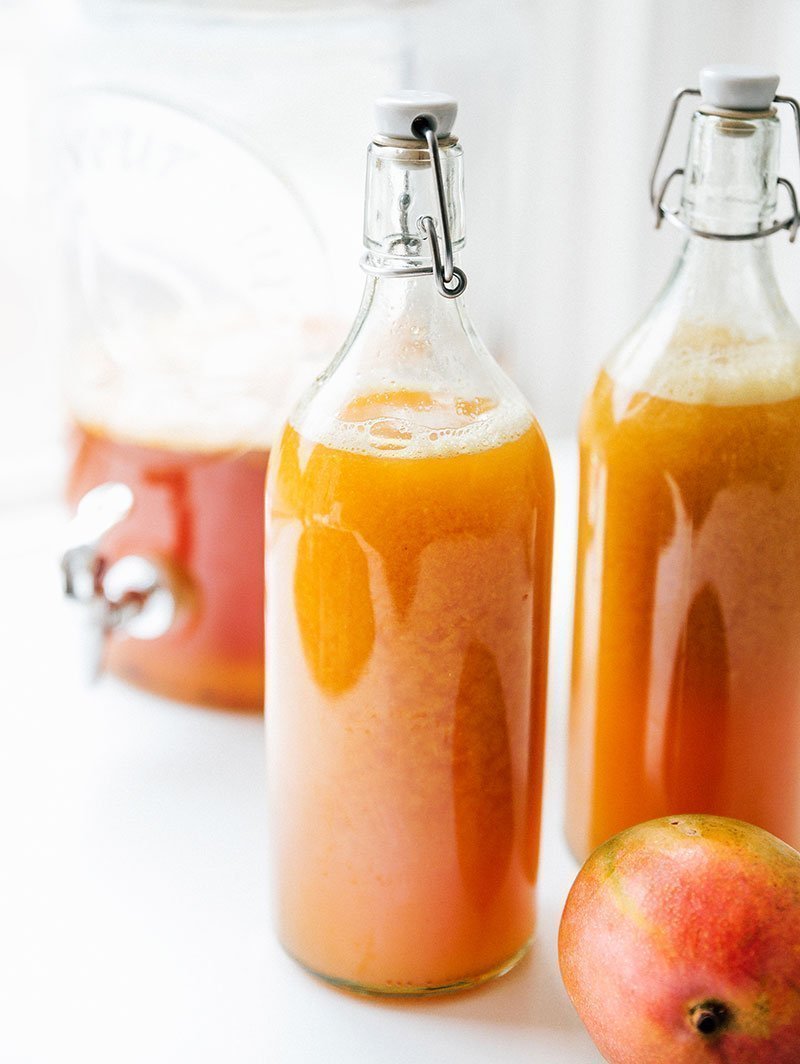
So why isn’t my kombucha fizzy?
This brings us to our question of the hour – why isn’t your kombucha fizzy? This is one of the most common questions we get in our kombucha Facebook group. There are numerous reasons why your kombucha might not have carbonation:
1. You’re not using the right bottles.
You need to use fermentation grade bottles to brew kombucha, as these are specifically designed to not only trap air in, but withstand the pressure build up without exploding or leaking. These flip top bottles and these bottles are both great. For the best buch, avoid decorative bottles and mason jars.
2. You need to adjust your first fermentation time.
Your first fermentation needs to run long enough that there are plenty of bacteria and yeasts built up in the kombucha – these power the carbonation reaction. On the other hand, you should ensure your first fermentation isn’t going so long that your kombucha tastes sour/vinegary – there needs to be some sugar left for the yeast to feed on to help power the carbonation.
3. You’re not letting the second fermentation go long enough.
This one is simple; you may just need to let it (second) ferment longer! A typical second fermentation takes 3 to 10 days, but this could take more time depending on the sugar content and temperature of your house.
4. Your fermentation station is too cold.
Fermentation slows down dramatically when the environment is cold. Ensure your kombucha bottles are somewhere relatively warm (68-78°F). For the winter months, this might mean investing in kombucha heating pads, or finding a warm area in your house (e.g. above the fridge, by a heater, or in the laundry room). Read more on ideal kombucha temperatures here.
5. You’re leaving too much air in the bottles.
It’s important to leave some head space (empty space) at the top of the bottles before sealing, which will act as a buffer for the pressure (and in turn prevent explosions). With that said, if you leave too much head space, the CO2 simply stays in the air inside the bottle rather than going into the kombucha, resulting in less fizz. Aim for about 1 to 2 inches of head space (this entirely depends on the bottle shape and size, so you may need to adjust as you settle into a fermentation routine).
6. You’re not stirring the kombucha before bottling.
If you’re pouring the kombucha straight from the fermentation jug into the bottles (and especially if you’re using a spigot, like in continuous brewing), then the bacteria and yeast are not being evenly distributed into the bottles. Be sure to give your kombucha a stir before bottling so that every jar can be equally full of that live yeast and bacteria power! This also mixes oxygen into the kombucha, which helps to stimulate the process of carbonation.
7. You’re filtering the kombucha before bottling.
By all means, filter the gunk out of the kombucha after the second fermentation, but not before! You want to get all those brown stringy bits (the yeast!) into your second fermentation bottles as well. These will do wonders for the carbonation and fizz.
8. Your tea isn’t strong enough.
It could be that your first fermentation brew just isn’t strong enough. Either add a few more bags of tea, or let the tea steep for longer to infuse your brew with more “food” for the bacteria and yeast.
9. You’re not adding fruit or sugar.
Adding mashed fruits, juices, sugar, or honey not only add flavor, but they are instrumental in carbonating your kombucha. They act as “food” sparking the reaction that creates carbonation. (Pro tip: for maximum fizz, add ginger!) See our favorite kombucha flavors here!
10. You’re burping the bottles too much.
I get it, the idea of a bottle exploding is a little scary (and cleaning up the mess that results? even more so). But if you’re burping your bottles daily to avoid potential catastrophe, you may be doing a disservice to your carbonation. Try holding off on burping your second fermentation bottles for 2 or 3 days if you’re having issues with kombucha not carbonating. (Worried about explosions? Grab a few of these carbonation caps to allow out excess pressure!)
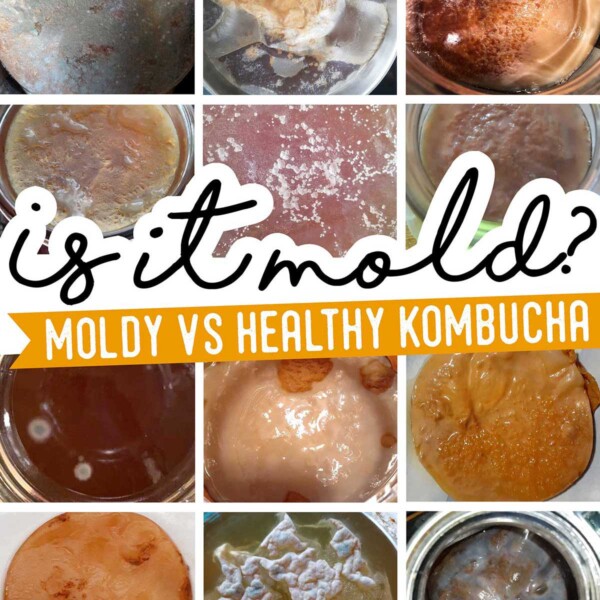
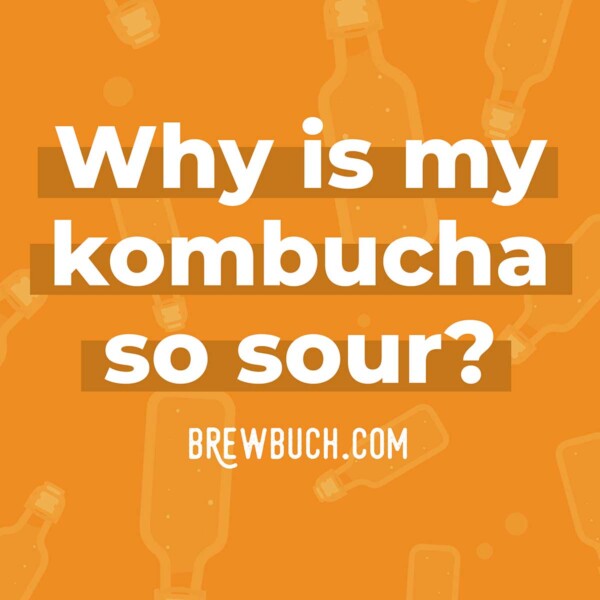
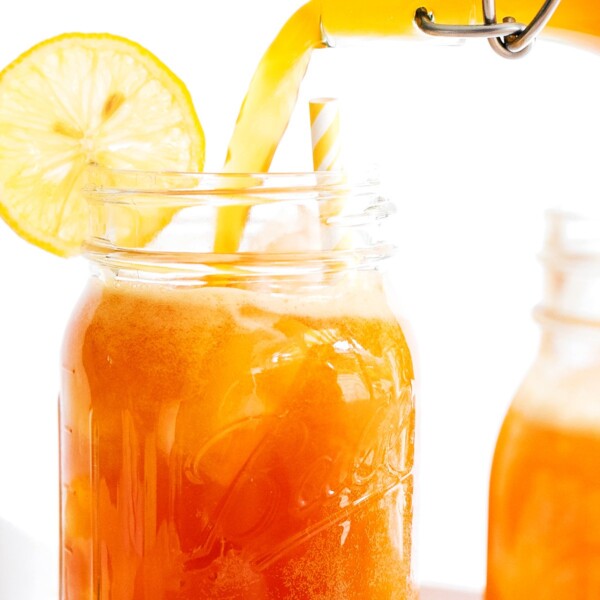
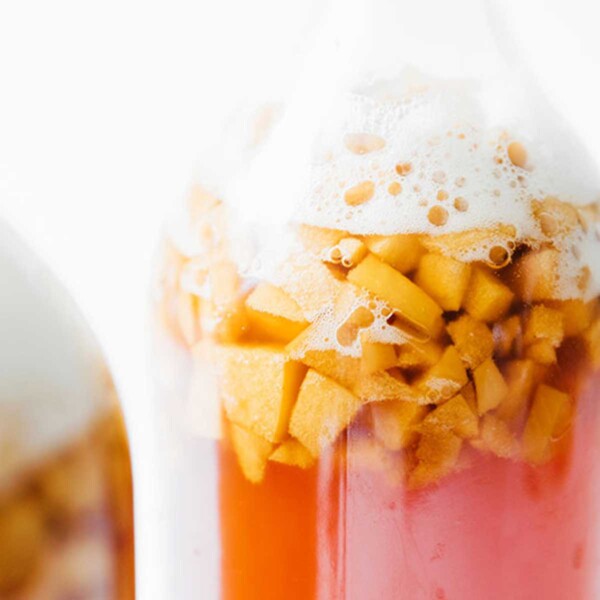
Thank you for the advice on here etc. I have 2 main problems. Once I open my f2 bottle I tend to loose the fizz from the on. So subsequent cups will have no fizz. Second problem, f2 is very cloudy. I see other people’s booch are clear. How do I achieve this. Thank you
Cloudy kombucha isn’t necessarily a problem. It usually just indicates that your yeast is more active and is causing more movement in the kombucha. With that said, my green tea kombucha batches are usually more clear, so you could try that out!
As for losing fizz, this is normal. Just leave it out at room temperature for a few hours and it should recarbonate!
Is there any way to fix your non fizzy bottles of Kombucha?
Try adding a bit of sugar and letting it ferment for another few days! 😀
Hi! I’ve been trying to perfect my carbonation recently. my first couple of brews I had no carbonation and I figured I wasn’t adding enough fruit. This last time i had so much carbonation it exploded out of the bottles when I opened it (huge mess!) But when, I strained the Kombucha and put it in my final serving bottle it no longer had any carbonation? Do you know how i can fix that?
You might just try straining it as you serve. I like to use a small mesh strainer, and hold it right over my glass. Then I just pour the kombucha through the strainer and into the serving glass!
And to prevent wastage when bottles fizz over, try opening the bottle while holding it over a large bowl, with a plastic baggie over the top. 😀
Actually for Sarah on her reply to this question. We want to sell ours to the local community & worried about asking them to strain into glass. I think people will get grossed out if they’re not seasoned boochies!? But we’re needing to up our carbonation. Feeling a bit stuck as we were straining into the bottles. If we strain afterwards, we lose fizz. Thanks.
That’s a tough one! I think I’ve seen on other store bought bottles before an explanation of what that floaty stuff is. Maybe make it part of the marketing/bottle?
Hi,
I made my first batch and I think it could use a bit more fizz. I went with the instructions on your original site/video and strained after 2nd fermentation with mesh strainer before bottling. On this site is lists straining as a possibility of affecting carbonation and shouldn’t be done before bottling. Can you help clarify for this newby? Thanks 🙂 The mojito and banana bread recipes turned out good but may need more carbonation.
No problem Christa! Just as a note, straining before the second fermentation isn’t a big deal/mistake, but if you’re having trouble with carbonation it’s a good starting point for fixing that. 😀
Hello, I am a little confused on filtration. In the description of how to make kombucha, the second fermentation has straining with mesh strainer before bottling. However when going to this section to read about carbination it says to not strain before bottling. Can you help clarify?
Thanks for pointing this out, Christa! I’ve changed this recommendation over time as I learned even more about brewing, and now recommend to not strain before the second fermentation, but to do it afterwards. We want to keep as much of that yeasty power in the kombucha as possible! 😀
I’m the same, I’ve just strained my first fermentation ???? hoping I get some fizz .
Can it still be drunk if it’s not fizzy?
Btw, great blog
Yep, it’s still safe to drink even if it’s not fizzy! 😀
Which would the lowest carb
Kombucha flavour
Adding ginger makes it pretty fizzy while keeping the carb count low! More on keto kombucha here 😀
Having the opposite issue at the moment. Husband complained of not enough fizz now I have too much. Working on happy medium for the next brew 🙂
Oh nice!! If you’re losing a lot of kombucha when it fizzes over, try opening the bottle with a bag over the top while sitting it in a bowl. You’ll catch all the kombucha and prevent it from spraying everywhere 😀
Your blogs are really helpful. Many thanks.
So happy to hear it, Janeen! 😀
I’ve been brewing kt for more than 4 years. 1st fermentation fir 14 days, 2nd fermentation (with ginger snd dried cranberries) for 4 day without burping. Then I refrigerate. It has always been very fizzy but my last few batches have been flat. Help!
I’m on my 3rd fermentation. Thank you for all your recipes and brewing info. You are such a delightful beautiful person. Thanks again
Aw, thanks so much Mike! Happy to help get you brewing.
I have a great carbonation after my second fermentation the very first time I open my bottle, but then it seems to go flat. So first drink is great, but subsequent drinks arent. Help?
Let it sit out at room temp for a few hours to carbonate back up! 😀
These tips are great. I found a few things that may contribute to when my kombucha isn’t fizzy enough, and I appreciate your help for my future brewing! Your blog is very helpful, and I enjoy trying all the neat kombucha flavors.
So happy to hear it, Stephanie! 😀 Happy brewing!
Thank you! I was only doing 2 days for the second fermentation…whoopsie.